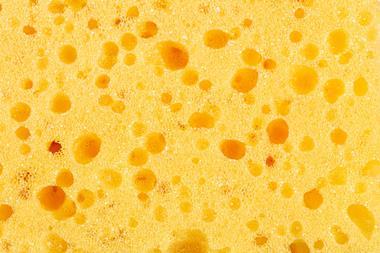An artificial intelligence-based approach has predicted hundreds of harmful compounds that could form when e-cigarette flavour chemicals are heated in vaping devices. The research adds to mounting evidence concerning the safety of vaping, finding that many of the predicted pyrolysis products from flavours are classed as either acutely toxic, health hazards or irritants. What’s more, their impact on health might take years to emerge, say the researchers.

E-cigarettes work by heating up an e-liquid, or e-juice, to produce an aerosol that comprises nicotine, solvents – including propylene glycol and glycerol – and flavourings, which a user then inhales. There are tens of thousands of different flavour e-liquids on the market and ingredients are picked from at least 180 commercially available flavour compounds, which were originally developed for the food industry and deemed safe for consumption. However, the long-term health risks of heating and inhaling these chemicals remain unknown.
‘As the flavours being used in vapes have never been clinically tested for heating to high temperatures with lung inhalation, it is important to quickly get an understanding of the cocktail of chemicals that vape-users’ lungs are being exposed to,’ says Donal O’Shea, who led the new work at the Royal College of Surgeons in Ireland, Dublin. ‘Our approach may reveal the longer-term health risks of vaping in advance of clinical diseases emerging in the general population.’
In 2019, O’Shea and co-workers determined that the pyrolysis, or thermal decomposition, of vitamin E acetate, an additive present in some unregulated vaping mixtures, can create highly reactive and toxic ketene gas. This offered the likely chemical basis of a mysterious outbreak of vaping-related lung injuries and deaths in the US at the time and highlighted the need to investigate the pyrolysis products of other components of e-liquids, including flavour ingredients.
Flavour chemistry
The team trained a neural network – a machine-learning model that mimics the human brain – on over 300,000 reactions. It then used this to predict 7307 pyrolysis breakdown products of 180 compounds known to be used as e-liquid flavourings. Next, using mass spectrometry data, the molecular weights of predicted products were compared with a database of known breakdown products, identifying 1169 matches. These were then cross correlated against the PubChem database, revealing that 127 acutely toxic, 153 health hazards and 225 irritant compounds were predicted.
‘From the compounds predicted, chronic obstructive pulmonary disease, cardiovascular disease and cancers could be expected to arise from prolonged exposures,’ says O’Shea. He was particularly surprised by the structural diversity of compounds that can be produced. ‘While many are similar to those found in tobacco smoke, many are not, indicating that the health impacts may ultimately differ,’ he explains. ‘The ester flavours are particularly concerning as they produce many reactive carbonyls, alkenes and aromatics and are most popular with a younger demographic.’ Among the e-liquid flavours that have esters in their ingredients are bubblegum, fruit and citrus-based ones.
Irfan Rahman, who investigates the health impacts of tobacco and e-cigarettes at the University of Rochester Medical Center, says that these are ‘interesting chemical analyses’. ‘We see aldehydes are predicted which become highly toxic to functional proteins.’ He encourages further work to explore the biological effects of the predicted compounds.
Next steps
O’Shea agrees that this is an essential next step. ‘Using our dataset of predicted compounds, biomarkers of exposure to these chemicals could now be investigated in vape users and the results compared to non-vape users,’ he explains.
‘It is so crucially important to understand flavourings’ health effects, especially given that users essentially inhale these at a high daily frequency, often for years,’ comments Hanno Erythropel, an analytical chemist who studies e-liquid flavours at Yale University, US. ‘This approach is very interesting and produces results that would never be possible to realise experimentally due to the sheer volume.’
However, Erythropel notes that it remains to be proven that the predicted compounds will actually form from vaping because of heating and catalytic variables in the many available e-cigarette devices. ‘But this might be helpful in pointing researchers in the right direction to look for specific, problematic compounds to be tested experimentally – any approach that will help us to better understand the impact of flavours in e-cigarettes is useful.’
O’Shea envisages further work to confirm the predictions by comparing them with those of other AI training sets, as well as experimental analysis of vape plumes. ‘We would also like to expand the chemical reactions to include combustion products and predict the potential for catalysis from the metal components found within vaping devices,’ he says.
References
A Kishimoto et al, Sci. Rep. 2024, DOI: 10.1038/s41598-024-59619-x












1 Reader's comment